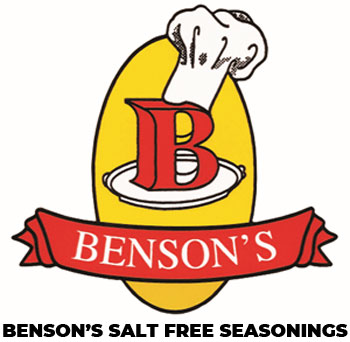Wishing you all a Happy and Safe 4th of July. I really love fireworks, so we will watch them tonight. Barbecue is especially popular today and July is National Grilling Month. Typical barbecue sauce can be quite salty (high in sodium). Below is a link for my Barbecue Sauce Recipe in the cookbook. It can… Read more »
Category: Low Sodium Cooking Tips
No Salt Added Pinto Beans, Simply Chili Recipe
Here is a good canned Pinto Bean with No Salt Added Use in our Simply Chili Recipe
No Salt Added Mustard
Here is a very good stone-ground mustard and it’s no salt added. Try It!
3 Tips that can help a Low Sodium Diet
Fresh Lemons. These are so key to a salt free diet/low sodium diet. Always have fresh lemons around. The basic lemons like Eureka work better than the Meyer lemons here. Your tongue has trouble telling the difference between salt and sour. Lemon is Mother Nature’s sour salt. A squeeze of fresh lemon juice will brighten… Read more »
Maximize The Use of Seasonings, Herbs and Spices For A More Flavorful Healthy Diet
Seasonings are so important when cooking a healthy diet. There are ways you can bring out the flavor of seasonings, herbs, spices, and chilies. How you cook them, when you add them and how you store them all make a difference when trying to maximize flavor. Learn more click here: https://www.bensonsgourmetseasonings.com/cooking-tips-maximize-the-use-of-seasonings-herbs-and-spices-for-a-more-flavorful-healthy-diet/
I am anti-salt in seasonings because the more seasoning you add, the more salt you are adding.
It’s not that I am so anti-salt. Salt can have its place. I am, however, anti-salt in seasonings because the more seasoning you add, the more salt you are adding. Usually, salt is listed as the first ingredient often followed by sugar because the sugar will help it not taste so salty. You lose control… Read more »
Salt is just a habit, after a while without it you will start to taste the food not just the salt
Many who must give up salt (Dr. says) find it very difficult to enjoy the food without salt. It takes time, on average (depending on how much you cheat) about 3 months for the taste buds to adjust to food without salt and know that if the food seasoned properly it can be enjoyed. Yes,… Read more »
Breadings – Tips For Watching The Sodium Content
Breadings – These can be tricky on a low sodium diet because sodium in breadings can be sneaky. Plain flour is most commonly used to bread meats or vegetables for cooking, especially frying. Flour tends to need salt otherwise it tastes bland like paste. Try adding seasonings (like Gusto) to the flour before breading; this… Read more »
Do You Know How To Grill Low Sodium Vegetables?
At this time of year, Spring and Summer, with all the varieties of vegetables coming into their season. Nothing is more beautiful than a platter of grilled vegetables. Make sure to grill extra vegetables to add more flavor and serve in sandwiches, salads, omelets, snacks, etc. Learn 8 tips for added flavor when grilling vegetables
Parsley Stems vs Cilantro Stems
Low Sodium Cooking Tip: When blending or chopping fresh parsley do not use the stems as they taste bitter. However, when blending or chopping fresh cilantro you can use the stems as they taste sweet.
You May Have Heard “We Eat With Our Eyes First.”
Cook with a rainbow of colors. You’ve heard the saying “We eat with our eyes first.” Choose to make your food more colorful. This tip makes your diet more interesting with a variety of colorful fruits, vegetables, nuts, seeds, and grains. Here are a few ideas you might try. When using a basic yellow or… Read more »
If Life Gives You Lemons Keep Them They Boost Flavor
Always keep fresh lemons and/or limes on hand. You won’t believe the difference they can make. Your tongue has trouble distinguishing between salt and sour as you pucker up with either. By adding a squeeze of fresh lemon juice at the end of your cooking or at the table, you’ll find many dishes brighten up… Read more »
Doc Says No More Salt…What Can I Do?
First step: Take the salt shaker off the table and don’t add salt to your cooking. Just don’t do it. Tip: You don’t need to add salt to water when cooking potatoes, rice, pasta or even oatmeal. Your toppings will be enough to flavor them. Just eliminating salt from the table and your cooking is… Read more »
Do you know the rule for substituting fresh herbs for dried?
When substituting fresh herbs for dried herbs usually the dried herbs are much stronger. The rule of thumb is 3 to 1. One Tablespoon = three teaspoons of fresh herbs to 1 teaspoon of dried. For best results, the dried should be fragrant. The more aroma you smell, usually the fresher they will be so… Read more »
Do you know how much sodium 1 tablespoon of soy sauce has?
Did you know just one tablespoon of soy sauce typically contains a whopping 1,000 milligrams of sodium? That’s about half of the recommended limit for sodium intake in an entire day. Consider soy sauce a high-sodium food. Low Sodium Soy Sauce Substitute Recipe(This recipe doesn’t taste exactly like the real thing but it is pretty… Read more »
How much garlic?
A bulb of garlic is called a head or a whole head of garlic. Each of the wedges is called a clove of garlic or a garlic clove. 1 clove of garlic = a teaspoon. 3 cloves = a tablespoon. A roasted head of garlic makes about a tablespoon. Click here to learn more…http://bit.ly/1UKW1Fe
Garlic tips – How you use it makes a difference
Prepare the garlic and use it. Don’t chop the garlic too far ahead of time as it starts oxidizing and turning bitter. You may have noticed on most cooking shows, they chop the garlic and it goes directly into the pan. This is best way for the best flavor. If you must chop a head… Read more »
Garlic – How to Store It
How you store garlic makes a difference in the flavor and health benefits Store garlic in a cool dry place. Not in the refrigerator and don’t freeze it as freezing deadens the flavor. Stored properly, fresh garlic will keep a month or more. Keep the garlic head as whole as possible, with the paper skins…. Read more »
Purchase the freshest garlic
How you purchase, store, prepare and cook garlic, makes a difference in the flavor and the health benefits. Purchase the freshest garlic, as it has the best taste. Farmer’s markets are great for this as they usually have many varieties of hardneck or softneck to experiment with. The white bulb is the more common American… Read more »
April is National Garlic Month

I love garlic both for the health benefits and for it’s flavor. You might have noticed, all of the seasonings have garlic in them. The amounts are different, with Supreme having the most garlic and Table Tasty having the least amount which is none. Most of our recipes have fresh garlic in them. Some of… Read more »
What is “mise en place”?
“Mise en place” simply translates “In it’s place”. This is an important cooking term and is used by all well trained chef’s and cooks. You’ll see this done on cooking shows in restaurant kitchens, bakeries, food trucks and hopefully your kitchen. Whenever you begin a recipe, you set out what what you will need, everything… Read more »
Any idea what fond is?
This is a cooking term. The little browned bits on the bottom of your pan when cooking, is called fond. Deglaze the pan by adding a liquid. Usually something like (water, wine, juice, tomatoes, milk, broth or stock) to loosen those browned bits. Then continue by scraping them off the bottom (usually with a spoon… Read more »
Where Does Most Of The Sodium In Our Diet Come From?
Most of the sodium we get from our diets is not usually from the salt shaker, but from processed foods like canned foods, microwave foods and a really big source is fast foods. So to start lowering our daily sodium intake we must learn to cook differently. This means learning to cook from fresh ingredients,… Read more »
Raw Onion Adds Flavor & Crunch, But What If It’s Too Strong? Here is a tip
Raw onion, whether it sliced or diced, adds both flavor and crunch to fresh salsas, salads, sandwiches and burgers for example, but sometimes they are too strong. Tip: After you cut them, place in a sieve or colander and rinse briefly under the tap with cold water. The water washes away the strong sulfur juices… Read more »
